US Airways 2004 Annual Report Download - page 51
Download and view the complete annual report
Please find page 51 of the 2004 US Airways annual report below. You can navigate through the pages in the report by either clicking on the pages listed below, or by using the keyword search tool below to find specific information within the annual report.-
 1
1 -
 2
2 -
 3
3 -
 4
4 -
 5
5 -
 6
6 -
 7
7 -
 8
8 -
 9
9 -
 10
10 -
 11
11 -
 12
12 -
 13
13 -
 14
14 -
 15
15 -
 16
16 -
 17
17 -
 18
18 -
 19
19 -
 20
20 -
 21
21 -
 22
22 -
 23
23 -
 24
24 -
 25
25 -
 26
26 -
 27
27 -
 28
28 -
 29
29 -
 30
30 -
 31
31 -
 32
32 -
 33
33 -
 34
34 -
 35
35 -
 36
36 -
 37
37 -
 38
38 -
 39
39 -
 40
40 -
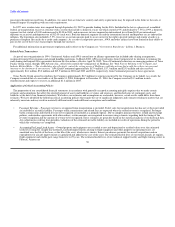 41
41 -
 42
42 -
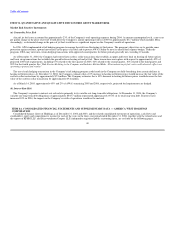 43
43 -
 44
44 -
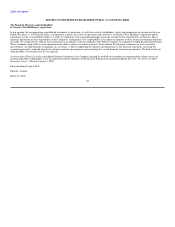 45
45 -
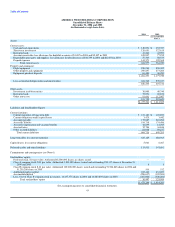 46
46 -
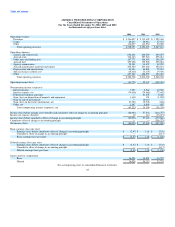 47
47 -
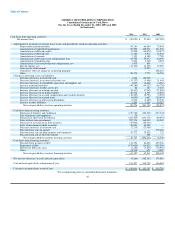 48
48 -
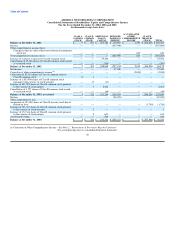 49
49 -
 50
50 -
 51
51 -
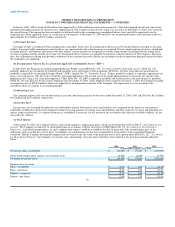 52
52 -
 53
53 -
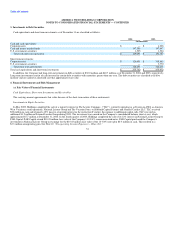 54
54 -
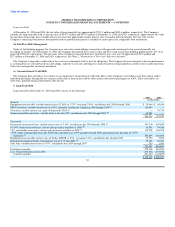 55
55 -
 56
56 -
 57
57 -
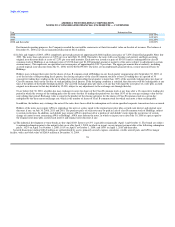 58
58 -
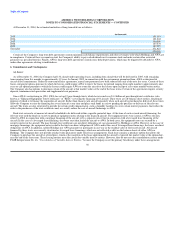 59
59 -
 60
60 -
 61
61 -
 62
62 -
 63
63 -
 64
64 -
 65
65 -
 66
66 -
 67
67 -
 68
68 -
 69
69 -
 70
70 -
 71
71 -
 72
72 -
 73
73 -
 74
74 -
 75
75 -
 76
76 -
 77
77 -
 78
78 -
 79
79 -
 80
80 -
 81
81 -
 82
82 -
 83
83 -
 84
84 -
 85
85 -
 86
86 -
 87
87 -
 88
88 -
 89
89 -
 90
90 -
 91
91 -
 92
92 -
 93
93 -
 94
94 -
 95
95 -
 96
96 -
 97
97 -
 98
98 -
 99
99 -
 100
100 -
 101
101 -
 102
102 -
 103
103 -
 104
104 -
 105
105 -
 106
106 -
 107
107 -
 108
108 -
 109
109 -
 110
110 -
 111
111 -
 112
112 -
 113
113 -
 114
114 -
 115
115 -
 116
116 -
 117
117 -
 118
118 -
 119
119 -
 120
120 -
 121
121 -
 122
122 -
 123
123 -
 124
124 -
 125
125 -
 126
126 -
 127
127 -
 128
128 -
 129
129 -
 130
130 -
 131
131 -
 132
132 -
 133
133 -
 134
134 -
 135
135 -
 136
136 -
 137
137 -
 138
138 -
 139
139 -
 140
140 -
 141
141 -
 142
142 -
 143
143 -
 144
144 -
 145
145 -
 146
146 -
 147
147 -
 148
148 -
 149
149 -
 150
150 -
 151
151 -
 152
152 -
 153
153 -
 154
154 -
 155
155 -
 156
156 -
 157
157 -
 158
158 -
 159
159 -
 160
160 -
 161
161 -
 162
162 -
 163
163 -
 164
164 -
 165
165 -
 166
166 -
 167
167 -
 168
168 -
 169
169 -
 170
170 -
 171
171 -
 172
172 -
 173
173 -
 174
174 -
 175
175 -
 176
176 -
 177
177 -
 178
178 -
 179
179 -
 180
180 -
 181
181 -
 182
182 -
 183
183 -
 184
184 -
 185
185 -
 186
186 -
 187
187 -
 188
188 -
 189
189 -
 190
190 -
 191
191 -
 192
192 -
 193
193 -
 194
194 -
 195
195 -
 196
196 -
 197
197 -
 198
198 -
 199
199 -
 200
200 -
 201
201 -
 202
202 -
 203
203 -
 204
204 -
 205
205 -
 206
206 -
 207
207 -
 208
208 -
 209
209 -
 210
210 -
 211
211 -
 212
212 -
 213
213 -
 214
214 -
 215
215 -
 216
216 -
 217
217 -
 218
218 -
 219
219 -
 220
220 -
 221
221 -
 222
222 -
 223
223 -
 224
224 -
 225
225 -
 226
226 -
 227
227 -
 228
228 -
 229
229 -
 230
230 -
 231
231 -
 232
232 -
 233
233 -
 234
234 -
 235
235 -
 236
236 -
 237
237 -
 238
238 -
 239
239 -
 240
240 -
 241
241 -
 242
242 -
 243
243 -
 244
244 -
 245
245 -
 246
246 -
 247
247 -
 248
248 -
 249
249 -
 250
250 -
 251
251 -
 252
252 -
 253
253 -
 254
254 -
 255
255 -
 256
256 -
 257
257 -
 258
258 -
 259
259 -
 260
260 -
 261
261 -
 262
262 -
 263
263 -
 264
264 -
 265
265 -
 266
266 -
 267
267 -
 268
268 -
 269
269 -
 270
270 -
 271
271 -
 272
272 -
 273
273 -
 274
274 -
 275
275 -
 276
276 -
 277
277 -
 278
278 -
 279
279 -
 280
280 -
 281
281 -
 282
282 -
 283
283 -
 284
284 -
 285
285 -
 286
286 -
 287
287 -
 288
288 -
 289
289 -
 290
290 -
 291
291 -
 292
292 -
 293
293 -
 294
294 -
 295
295 -
 296
296 -
 297
297 -
 298
298 -
 299
299 -
 300
300 -
 301
301 -
 302
302 -
 303
303 -
 304
304 -
 305
305 -
 306
306 -
 307
307 -
 308
308 -
 309
309 -
 310
310 -
 311
311 -
 312
312 -
 313
313 -
 314
314 -
 315
315 -
 316
316 -
 317
317 -
 318
318 -
 319
319 -
 320
320 -
 321
321 -
 322
322 -
 323
323 -
 324
324 -
 325
325 -
 326
326 -
 327
327 -
 328
328 -
 329
329 -
 330
330 -
 331
331 -
 332
332 -
 333
333 -
 334
334 -
 335
335 -
 336
336 -
 337
337 -
 338
338 -
 339
339 -
 340
340 -
 341
341 -
 342
342 -
 343
343 -
 344
344 -
 345
345 -
 346
346
 |
 |

Table of Contents
AMERICA WEST HOLDINGS CORPORATION
NOTES TO CONSOLIDATED FINANCIAL STATEMENTS — CONTINUED
The Company records impairment losses on long-lived assets used in operations when events and circumstances indicate that the assets might be impaired
as defined by Statement of Financial Accounting Standards ("SFAS") No. 144, "Accounting for the Impairment or Disposal of Long-Lived Assets."
Recoverability of assets to be held and used is measured by a comparison of the carrying amount of an asset to undiscounted future net cash flows expected to
be generated by the asset. If such assets are considered to be impaired, the impairment to be recognized is measured by the amount by which the carrying
amount of the assets exceeds the fair value of the assets. Assets to be disposed of are reported at the lower of the carrying amount or fair value less cost to sell.
(e) Restricted Cash
Restricted cash includes cash deposits securing certain letters of credit and surety bonds and cash deposits held by institutions that process credit card sales
transactions. Current restricted cash includes amounts set aside in an irrevocable trust for the redemption of the 10 3/4% senior unsecured notes that was
subsequently paid on January 26, 2005.
(f) Aircraft Maintenance and Repairs
Routine maintenance and repairs are charged to expense as incurred. The cost of major scheduled airframe, engine and certain component overhauls are
capitalized and amortized over the periods benefited and are included in aircraft maintenance materials and repairs expense.
In the first quarter of 2004, the Company revised the estimated useful life for certain aircraft and related spare parts inventory as a result of changes in
AWA's fleet plan and for capitalized maintenance on certain of its engines as a result of changes in aircraft utilization. The net impact of this change in
estimate decreased the net loss for 2004 by approximately $18.4 million or $0.51 per basic and diluted share.
An accrual for the estimated cost of scheduled airframe and engine overhauls required to be performed on leased aircraft prior to their return to the lessors
has also been recorded. These estimates are based on historical costs and our assumptions regarding the renewal of aircraft leases.
(g) Derivative Instruments
AWA's fuel hedging contracts do not qualify as cash flow hedges under Statement of Financial Accounting Standards No. 133, "Accounting for Derivative
Instruments and Hedging Activities" ("SFAS No. 133"). See Note 2, "Restatement of Previously Reported Amounts." Accordingly, the derivative hedging
instruments are recorded as an asset or liability on the balance sheet at fair value and the changes in the fair values are recorded in "Gain (Loss) on Derivative
Instruments, Net" in the accompanying consolidated statements of operations. See Note 12, "Nonoperating Income (Expenses) — Other, Net."
(h) Frequent Flyer Awards
The Company maintains a frequent travel award program known as "FlightFund" that provides a variety of awards to program members based on
accumulated mileage. The estimated cost of providing the free travel, using the incremental cost method as adjusted for estimated redemption rates, is
recognized as a liability and charged to operations as program members accumulate mileage.
The Company also sells mileage credits to companies participating in its FlightFund program, such as hotels, car rental agencies and credit card
companies. Transportation-related revenue from the sale of mileage credits is deferred and recognized when transportation is provided.
(i) Deferred Credits-Operating Leases
Rents for operating leases were adjusted to fair market value when the Company emerged from bankruptcy in 1994. The net present value of the difference
between the stated lease rates and the fair market rates has been recorded as a deferred credit in the accompanying consolidated balance sheets. The deferred
credit will be increased through charges to interest expense and decreased on a straight-line basis as a reduction in rent expense over the applicable lease
periods. At December 31, 2004 and 2003, the unamortized balance of the deferred credit was $38.3 million and $44.6 million, respectively.
48
